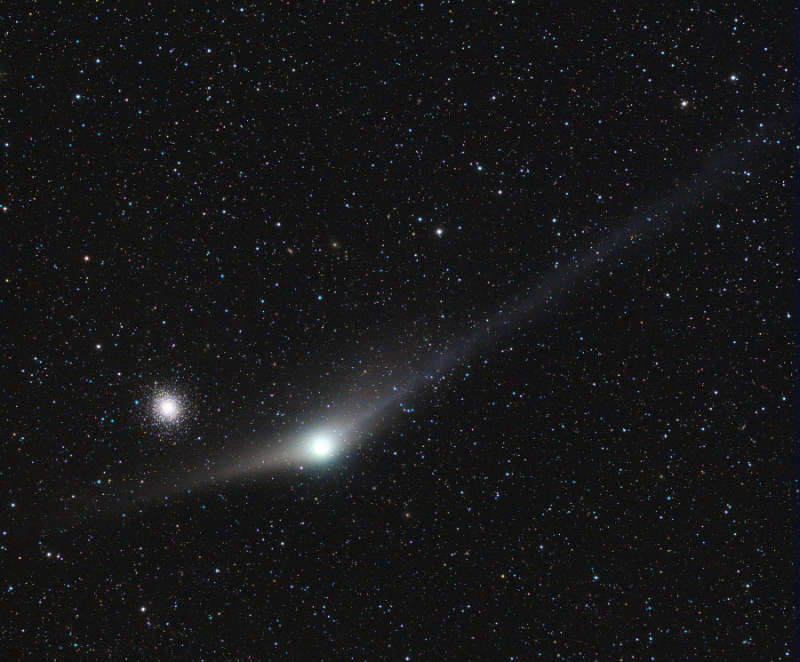
|
Credit & Copyright: Rolando Ligustri
(CARA Project,
CAST)
Explanation:
Sweeping slowly through the constellation Hercules,
Comet Garradd (C2009/P1) passed with about 0.5 degrees of
globular
star cluster M92 on February 3.
Captured here in its latest
Messier moment, the
steady performer remains just below naked-eye
visibility
with a central coma comparable in brightness to
the dense, well-known star cluster.
The rich telescopic view from New Mexico's,
early morning skies, also features Garradd's broad
fan shaped dust tail and a much narrower ion tail that
extends up and beyond the right edge of the frame.
Pushed out by the pressure of sunlight, the dust tail
tends to trail
the comet along its orbit while
the ion tail,
blown by the solar wind, streams away from the comet in
the direction opposite the Sun.
Of course, M92 is over 25,000 light-years away.
Comet Garradd is 12.5 light-minutes
from planet Earth, arcing above
the ecliptic plane.
|
January February March April May June July August September October November December |
| ||||||||||||||||||||||||||||||||||||||||||||||||
NASA Web Site Statements, Warnings, and Disclaimers
NASA Official: Jay Norris. Specific rights apply.
A service of: LHEA at NASA / GSFC
& Michigan Tech. U.
Based on Astronomy Picture
Of the Day
Publications with keywords: Messier catalog - comet - comet tail
Publications with words: Messier catalog - comet - comet tail
See also:
- APOD: 2025 July 7 Á Interstellar Comet 3I ATLAS
- Comet C/2025 F2 SWAN
- APOD: 2025 February 5 Á Comet G3 ATLAS Setting over a Chilean Hill
- APOD: 2025 February 2 Á Comet G3 ATLAS Disintegrates
- APOD: 2025 January 28 Á Comet G3 ATLAS over Uruguay
- APOD: 2025 January 26 Á The Many Tails of Comet G3 ATLAS
- Comet G3 ATLAS: a Tail and a Telescope
